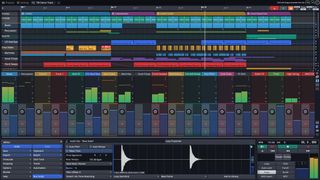
Instead, they provide a physical interface for controlling virtual instruments on your computer. MIDI controllers look like instruments, but don’t contain any sounds on their own. Musicians typically control virtual instruments via MIDI controllers like keyboards or beat pads. An audio interface takes audio signals and converts them into data a computer can process, allowing you to record and edit audio in software based environments like a DAW.

To record audio from external instruments or microphones, you need an audio interface. Record and edit audioĭigital audio workstations come with built-in sequencers that allow you to record, save, edit, and playback audio. The following are some some common uses of DAWs in music: 1. That said, common standards of design and compatibility can be identified across the different brands. There’s a range of DAWs available that we will explore in more detail below, each with unique features and advantages. Today, the convenience and accessibility of DAWs have made them the most popular way of making music and editing audio-used by everyone from bedroom producers and songwriters all the way up to top industry professionals.

You can record tracks, build up beats, add instruments or vocal parts, then lay out the arrangement, apply effects, and mix the finished work all within one interconnected hub. The whole studio process is packed into one, the creative ideas in tandem with the technical. Think of a DAW as a digital representation of a physical recording studio where you can produce audio for a wide variety of mediums including, film, gaming, podcasting, music, UX, and more. A Digital Audio Workstation (DAW) is a software application used to record, edit, and produce audio.


 0 kommentar(er)
0 kommentar(er)
